Friday morning we drove down into Baltimore, since L particularly wanted to see the Baltimore Museum of Industry, and after reading a bit about it I was intrigued as well. The museum was almost easy to get to, and would have been completely easy if I hadn’t overrun the parking lot entrance as I turned the corner on Key Highway. That called for a couple of blocks of backing and filling as I crabbed my way back to the entrance, sending L into the white-knuckle brigade over my maneuvering.
The museum is in a converted nineteenth-century oyster cannery building at the head of Locust Point, and is full of all kinds of wonderful things related to anything that has ever been made in the city, from steel ingots to umbrellas. We prowled through a replica of the drugstore where Noxzema was invented in 1910, complete with its soda fountain just waiting for the soda jerk in his little paper hat to step up and ask ‘What’ll it be today, a sundae? Banana split? Milkshake?” L was stopped dead by a replica of a commercial tailor’s shop, the pattern tag boards for men’s suits hanging in ranks from the ceiling, rolls of fabrics waiting to be cut with the saws on display, industrial sewing machines of several kinds (Piroshki, I saw what looked like another hemstitcher like mine in a pile of machines awaiting conservation), ILGWU picket signs, and I don’t know what all. I hauled up short when we got to the print shop, entranced by machinery that I’d known and often watched in operation when I was a child.
(In the 1960s, the Comanche Chief was still a hot-type operation, with fifty-year-old Linotypes and hundred-year-old platen presses still in daily use. The staff used to let me hang around and watch them at work, and I caught the excitement of listening to a lino’s clatter in the hands of an expert operator, picked up the rhythm of feeding a Chandler & Price platen press with blanks for funeral notices to be distributed around town next morning, learned the feel of the building-shaking thump the big web press made, running at full speed on “newspaper days.”)
I was still in the gallery, explaining the machines to M as well as I could without having any of it running to demonstrate, when a docent herded a tour group of third-graders into the gallery, and I eased over to listen from the back of the crowd. Two or three times when the kids were completely nonplused I contributed answers to move them along (e.g.: What do you call big letters? A: No, not capitals—you call them ‘upper case.’ And why do you do that? Because in a print shop the case that holds the capital letters sits above the one with the small letters, so it’s the upper case). I must have sounded like I knew something more than ordinary, because later on the docent hunted me down to ask where I’d learned what I knew about printing, and we had several minutes’ talk. He said that I should have come on Saturday, which is the day they have people in who run the linotype and presses. Alas, we couldn’t arrange to come back. One day we’ll have to go down to the Museum of Printing History in Houston, where they also have letterpress equipment that they run of a weekend.
L and M were both disappointed to find that the S. S. Baltimore (1906), the last operational steam tug on the East Coast, is closed to the public while the museum tries to raise money to repair her hull, which is corroding badly from the inside. L, of course, is always ready to climb over and around a ship whenever she gets the chance.
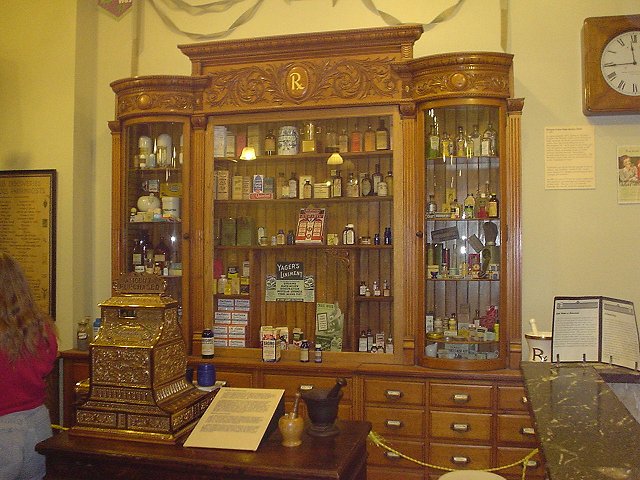
Drug and prescription case from the Bunting drugstore
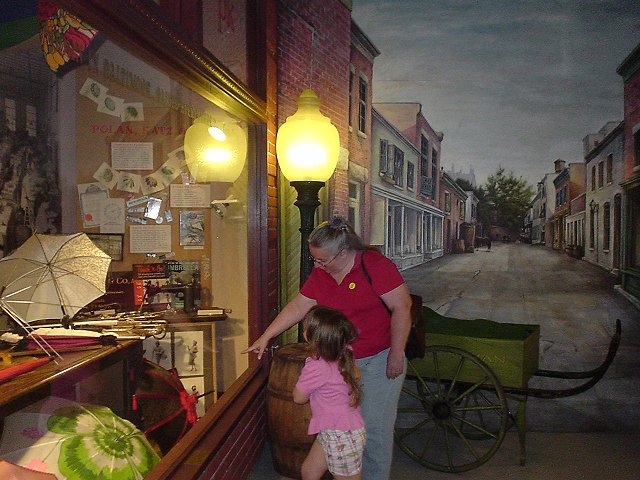
L and M look over the window display of umbrellas, with a trompe l’œil street scene in the background
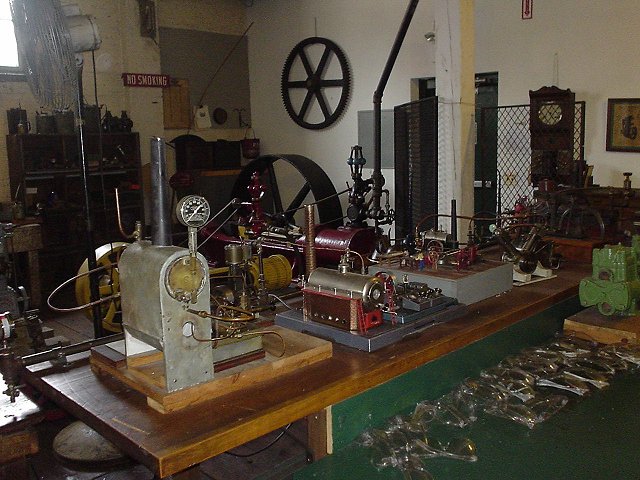
Working steam engine models, in the machine shop at the Museum of Industry
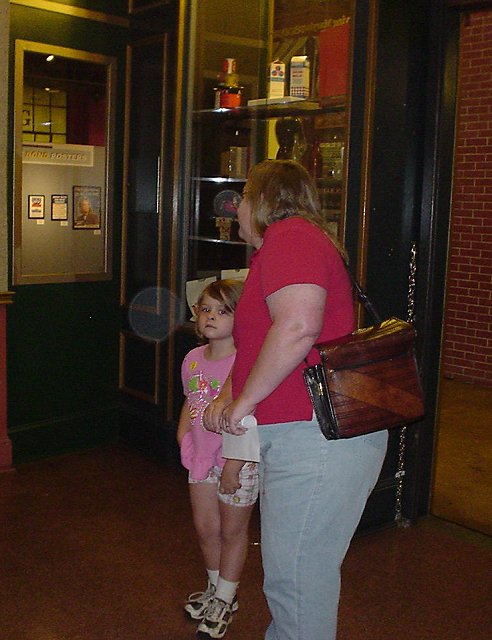
M catches me trying to take her picture unawares
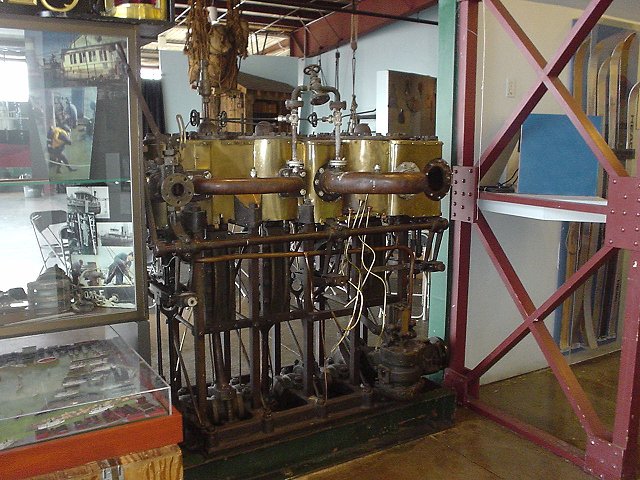
Five-cylinder steam tugboat engine
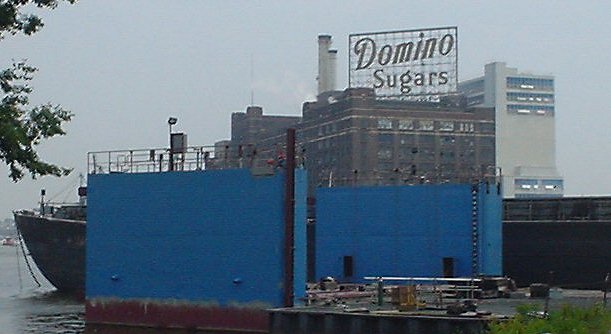
Domino Sugar sign, standing on the factory roof as it has since the 1920s
By this time it was after noon and we had to go to pick up T at the airport. We got turned around coming out of the museum, missed the Key Highway, and ended up struggling our way through Lansdowne to reach the B-W Parkway, driving through some neighborhoods that were nowhere to be after dark, and I wasn’t even happy being there in the middle of the afternoon. We did finally reach the parkway, got out to Friendship, and picked up T without further incident.
Next I provide Local Color at two parties.
Dreen a nickel for the waxen blueberries. Fnord.
